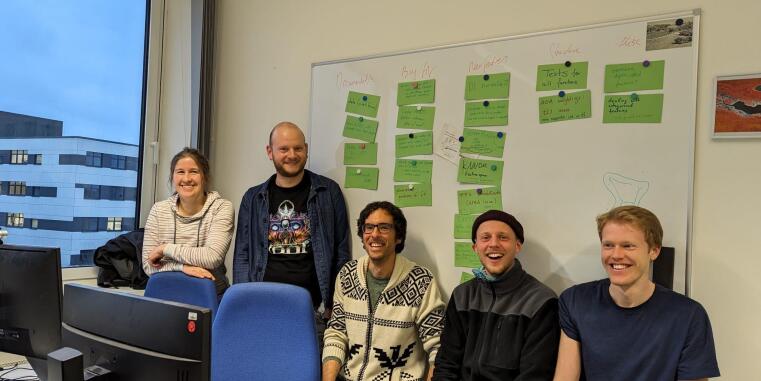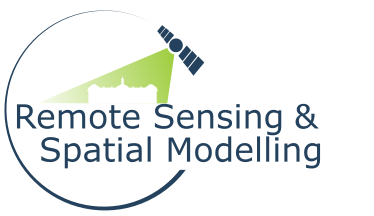

Research Focus: Development of New Methods for Spatial Modeling
Rapid climate change and biodiversity loss pose enormous challenges. They lead to far-reaching ecological changes that can only be captured and understood through continuous spatio-temporal monitoring. Satellite-based earth observation enables comprehensive and regular environmental data collection. However, the challenge lies in translating these vast amounts of data into meaningful environmental information. Given the complexity of environmental systems, artificial intelligence (AI) and machine learning (ML) methods provide valuable tools. However, applying these methods to spatial data is challenging, as complex spatial patterns must be recognized and uncertainties considered to enable reliable predictions.
Conceptual model development
Our research shows that existing methods are often inadequate (Meyer and Pebesma, 2022; Ludwig et al., 2023) and that many AI-based environmental information products exhibit significant uncertainties. To bridge this gap, we develop innovative approaches aimed at creating more precise remote sensing and AI-based Earth observation products. These include spatial validation methods for improved model assessment (Milà et al., 2022; Linnenbrink et al., 2024) as well as variable selection strategies (Meyer et al., 2018; Meyer et al., 2019) that enhance model generalizability.
With the "Area of Applicability," we have developed a method that, for the first time, defines the operational domain of models and evaluates their transferability to new regions and future environmental conditions (Meyer et al., 2021). This method is extended by "Local Point Density" (Schumacher et al., 2024), which introduces a novel approach to mapping uncertainties arising from the model’s lack of knowledge about a given region. This is particularly important in the context of the dynamic changes driven by climate change.

Software development
By integrating our developed methods into open-source software, particularly our R package "CAST" (https://hannameyer.github.io/CAST/), we make our scientific advancements directly available as practical tools. These methods are already being used by various research groups to model a wide range of environmental variables – from soil carbon and land-use intensity to biodiversity, crop yields, water quality, and particulate pollution. Since such predictions are valuable not only for science but also for many other fields, the developed methods and generated environmental data provide important insights for policy, industry, and environmental research. In our research, methodological innovations are closely linked to ecological questions.
Application in landscape ecology
In applied projects (see research focus "Environmental Monitoring"), we specifically implement these methods, for example, to model CO₂ emissions from soils (DFG – Carbon4D), assess the success of peatland restoration (DFG/BiodivERsA – Reversal), or capture biodiversity patterns in grasslands (DFG – Beyond).
Our research projects with a focus on method development
CRC TRR 391 - A05: Deep learning in space and time (2024 – 2028)
Subproject in DFG-Joint Project Hosted outside the University of Münster: DFG - Collaborative Research Centre | Project Number: TRR 391/1, A05
PRISM – Preservation and RecognItion of Spatial patterns using Machine learning (2024 – 2026)
EU-Project Hosted at University the of Münster: EC Horizon Europe - Marie Skłodowska-Curie Actions - Postdoctoral Fellowship | Project Number: 101147446
Uebersat – Spatio-temporal transferability of satellite-based AI-models (2021 – 2023)
Individual Granted Project: Federal Ministry of Economic Affairs and Climate Action | Project Number: 50EE2009


